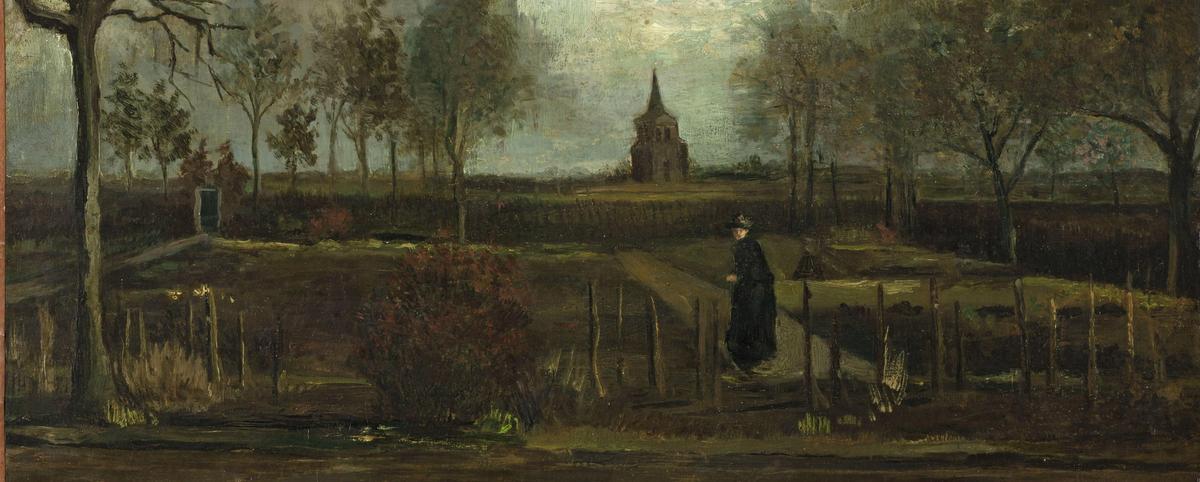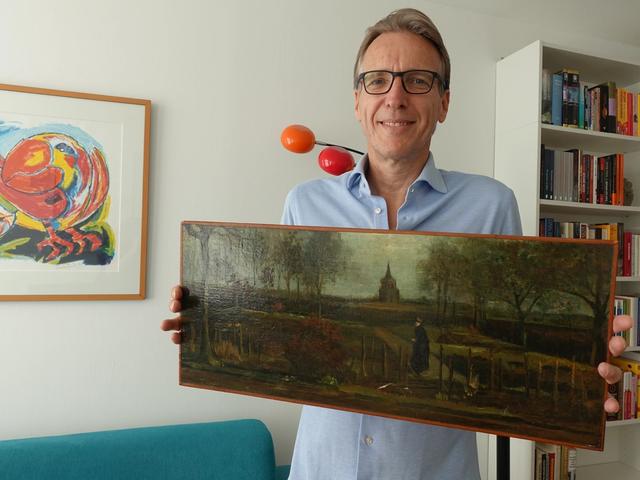Van Gogh’s painting The Parsonage garden at Nuenen in Spring has been recovered, just over three years after it was stolen in Laren in a smash-and-grab raid. The return was negotiated a few days ago by the Dutch private art detective Arthur Brand, who met a contact on Amstelveld, a small square off Amsterdam’s Prisengracht Canal. The Van Gogh was handed over in an Ikea bag.
It is believed that those holding the Van Gogh were hoping to use it to barter for the release of a prisoner.
The picture had been on loan to an exhibition at the Singer Laren museum from the Groninger Museum, in Groningen. On 30 March 2020, at 3.15am, it was seized by thieves who violently broke through the glass door of the public entrance to the Singer Laren. Painted in March 1884, the work depicts the garden of Vincent’s parents.
Almost exactly a year later, in April 2021, a suspect was arrested. He was found guilty of stealing both the Van Gogh and a Frans Hals painting from a museum in Leerdam, and was sentenced to eight years imprisonment. The two pictures remained untraced.
Last weekend Brand recovered the Van Gogh, in an operation undertaken in cooperation with the Dutch police. Andreas Blühm, the director of the Groninger Museum, says that “Brand played a key role in this case and the museum greatly appreciates that”. Brand has long been pursuing the case, as he earlier told The Art Newspaper.
The Parsonage garden at Nuenen in Spring is temporarily being held at the Van Gogh Museum in Amsterdam. Blühm says the painting (oil on paper on panel) “has suffered”, although at first glance it is “still in good condition”. It will now be properly examined and any necessary conservation work undertaken, which will take “weeks, if not months”, before it goes back on display at the Groninger Museum.
The insurer has already paid the museum the value of the Van Gogh, so the company is now the formal owner of the painting. But under the usual arrangements, the museum has the first right to buy it back. A museum spokesperson says they will “of course use this right in order to show the work to the public”.



